PREVIEW: Huma Bhabha
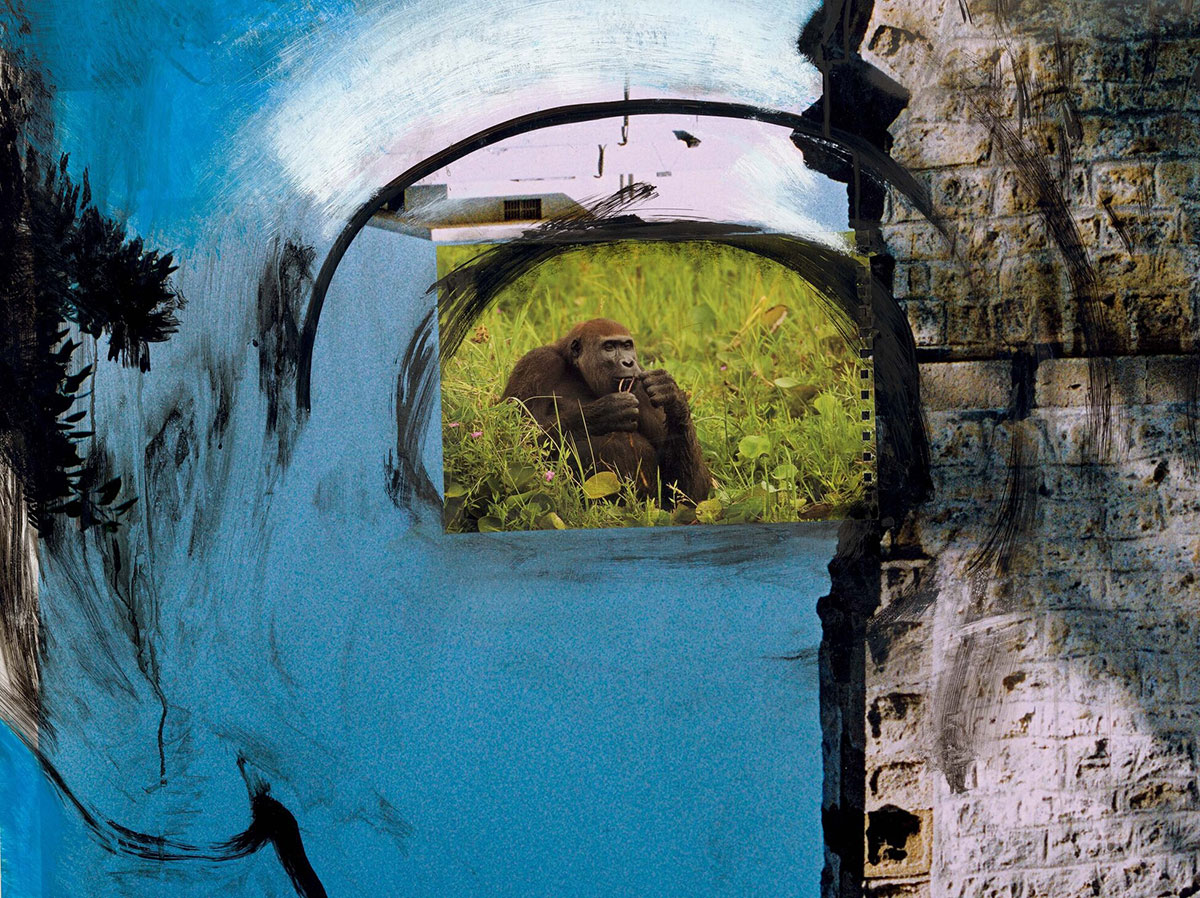 Huma Bhabha draws inspiration from science fiction, mythology, zoology, art history, and popular culture. In her sculptures, works on paper, and drawings on photographs, the figure is ubiquitous. Laced with allusions to war, migration, colonization, and ecological fragility, her hybrid creatures – both human and animal – suggest a strange, yet familiar, otherness.
Huma Bhabha draws inspiration from science fiction, mythology, zoology, art history, and popular culture. In her sculptures, works on paper, and drawings on photographs, the figure is ubiquitous. Laced with allusions to war, migration, colonization, and ecological fragility, her hybrid creatures – both human and animal – suggest a strange, yet familiar, otherness.
By Efi Michalarou
Photo: David Zwirner Gallery Archive
Huma Bhabha presents two concurrent exhibitions at David Zwirner Gallery in New York. Bhabha creates layered and nuanced sculptures and drawings that center on a reinvention of the figure and its expressive possibilities. Her formally innovative practice pulls from a wide range of references, from those that span the history of art to quotidian influences such as science fiction and horror films and the makeshift structures and detritus of urban life. Instinctive and rigorous, her work brings diverse aesthetic, cultural, and psychological touchstones into contact with matters of surface, materiality, and formal construction. Featured at West 20th Street are new sculptures, varying in size from small to monumental; on view at East 69th Street are new works on paper and smaller-scale sculptures. Together, the exhibitions highlight Bhabha’s ability to move between a wide range of media and forms, creating deeply resonant hybrid figures that seem to simultaneously dwell in the past, present, and future. The exhibition in Chelsea comprises a grouping of figures in patinated and painted bronze or cast in iron. The works are sculpted from materials including styrofoam, cork, and clay, which the artist then carves, gouges, paints over, and otherwise marks up before casting. While distinct in appearance and size, all the sculptures in the exhibition seem to be connected by a kind of genetic thread, forming an emotional hive that resides in a shared landscape of destruction, displacement, and rebirth. A lone diminutive figure cast in bronze and painted from the neck down in styrofoam pink, “What Should it Be” (2024) stands like a ringmaster or liminal guide poised at the threshold of distinct physical or psychic terrains as it leads visitors into a charged zone, recalling the titular character from Andrei Tarkovsky’s science-fiction cinematic masterpiece “Stalker” (1979). Beyond lies a group of three cast-iron sculptures (Bhabha’s first foray into the medium) of disembodied heads and torsos laid out on concrete plinths, glowing fiery orange as they rust, as if caught in a radioactive wasteland or left for dead on the scorched surface of Mars. The cast-iron works will continue to oxidize and evolve in appearance, affirming the notion of time as a primordial sculptor’s tool—a concept that Bhabha has repeatedly returned to in her oeuvre. Further inside are two upright figures, “Maybe Nothing Maybe Everything” (2024) and “Nothing Falls” (2024), both cast in bronze. The former presents a multiheaded creature whose arms are pressed to its chest in prayer or panic. The latter takes the form of a rectangular earthen body that surges upward from the ground—reminiscent of the unshakable monolith from Stanley Kubrick’s film “2001: A Space Odyssey” (1968)—and pushes its bone-white skeletal head toward the open sky as if it is a holy relic or ritual sacrifice on a dais. These two sculptures flank the largest figure in the show, “Even Stones Have Eyes” (2023), which stands more than twelve feet tall. With its shadowy Januslike faces that have been etched, scarred, and seemingly charred, this peg-legged behemoth exudes a thrilling stillness and horror as it towers over its companions like a watchful parent surrounded by its brood. At once monstrous, animal, alien, and deeply human, Bhabha’s totemic figures recall cycles of growth and decay, destruction and restoration, thereby challenging our understandings of permanence, monumentality, and personal and collective histories. At the East 69th Street gallery, the cast-iron sculpture “Waddah” (2024) takes the form of a lone petrified human figure—devoid of a face or identifying features—that rests on a pedestal reminiscent of black earth. As with many of her recent sculptures, Bhabha considers the plinth to be an intrinsic part of the work, lending the overall arrangement the feeling of a mortal relic or an artifact from another world. The other sculpture on view, “My Ancestor” (2023), comprises a pair of amputated legs that have been sculpted out of porous cork and inscribed with lines of white chalk to resemble stump feet or cloven hooves. Hovering between states of ruin and repair, these sculptures appear either as bearers of the collective casualties forced on nature, or as signs of fresh life emerging from the earth. Juxtaposed with “Waddah” and “My Ancestor” is a suite of new works on paper, each one depicting a different head constructed from vibrant swaths and strokes of ink, acrylic, gouache, and pastel, as well as elements of collage. An enduring and crucial aspect of her practice, Bhabha’s large-format multimedia drawings beckon the viewer with their exaggerated, ghoulish visages and unabashedly confrontational gazes. Together, Bhabha’s sculptures and works on paper are visibly marked by the human hand. With their rough-hewn surfaces, they appear to have emerged from a blasted landscape—like survivors of war, or perhaps prisoners returning home, acutely aware of those left behind.
Photo: Huma Bhabha, Untitled, 2022 (detail), © Huma Bhabha, Courtesy the artist and David Zwirner Gallery
Info: David Zwirner Gallery, 537 West 20th Street, New York, NY, USA, Duration: 22/2-13/4/2024, Days & Hours: Tue-Sat 10:00-18:00 & David Zwirner Gallery, 34 East 69th Street, New York, NY, USA, Duration: 22/2-6/4/2024, Days & Hours: Tue-Sat 10:00-18:00, www.davidzwirner.com/
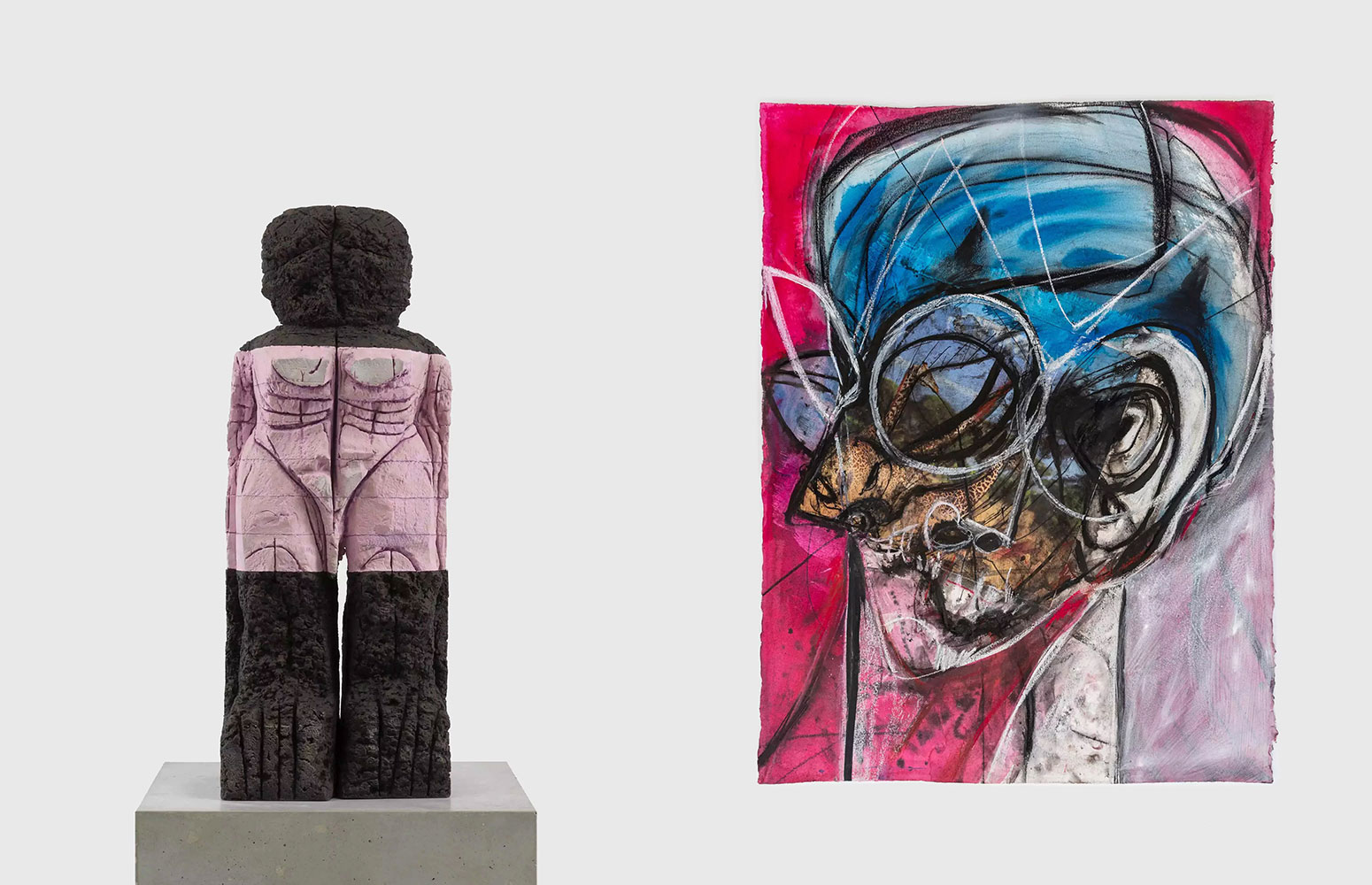
Right: Huma Bhabha, Untitled, 2021, Ink, acrylic, gouache, pastel, and collage on paper, 30 1/8 × 23 inches (76.5 × 58.4 cm), © Huma Bhabha, Courtesy the artist and David Zwirner Gallery
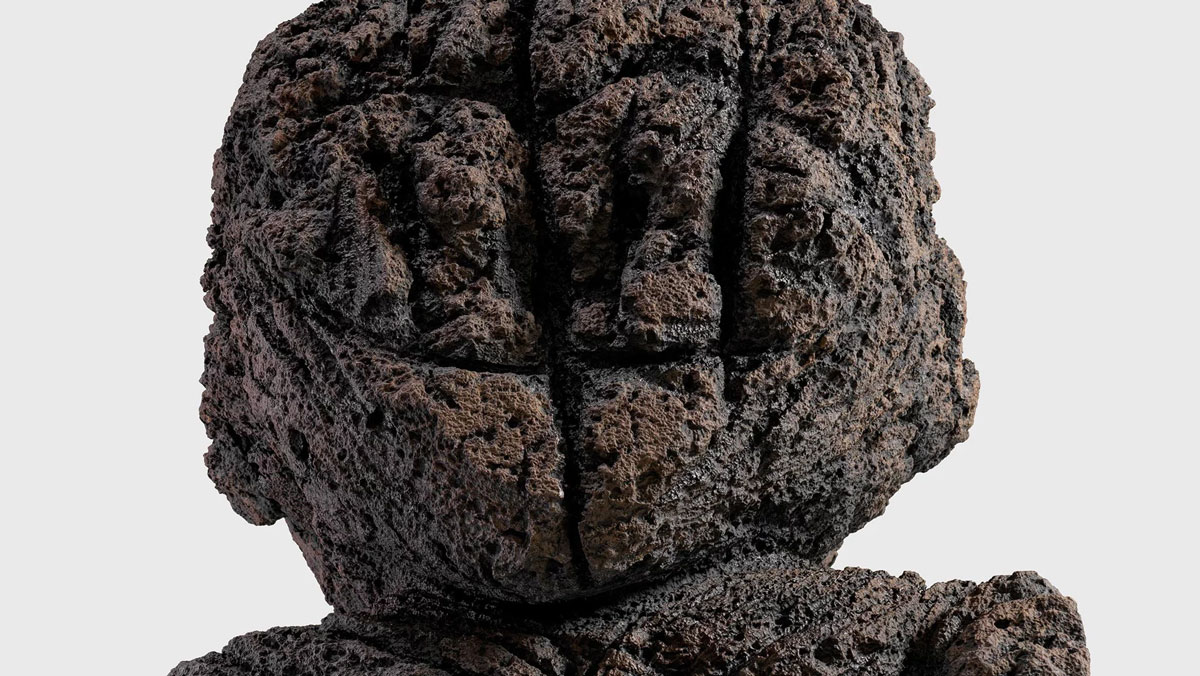
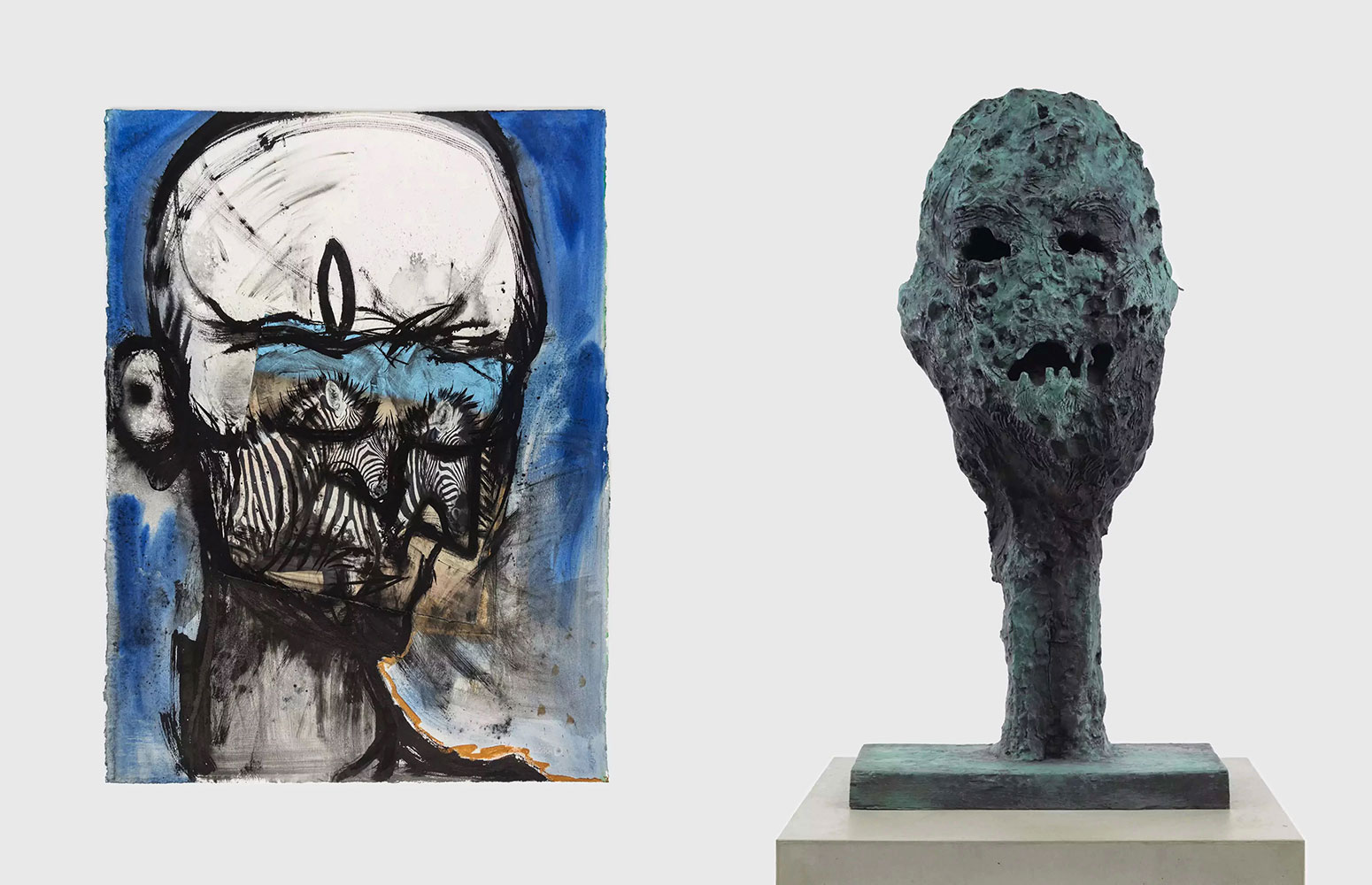
Right: Huma Bhabha, The Ancient and Arcane, 2021, Patinated bronze, Artwork: 34 × 17 1/2 × 14 inches (86.4 × 44.5 × 35.6 cm), Pedestal: 34 × 22 × 22 inches (86.4 × 55.9 × 55.9 cm), Overall: 68 × 22 × 22 inches (172.7 × 55.9 × 55.9 cm), © Huma Bhabha, Courtesy the artist and David Zwirner Gallery
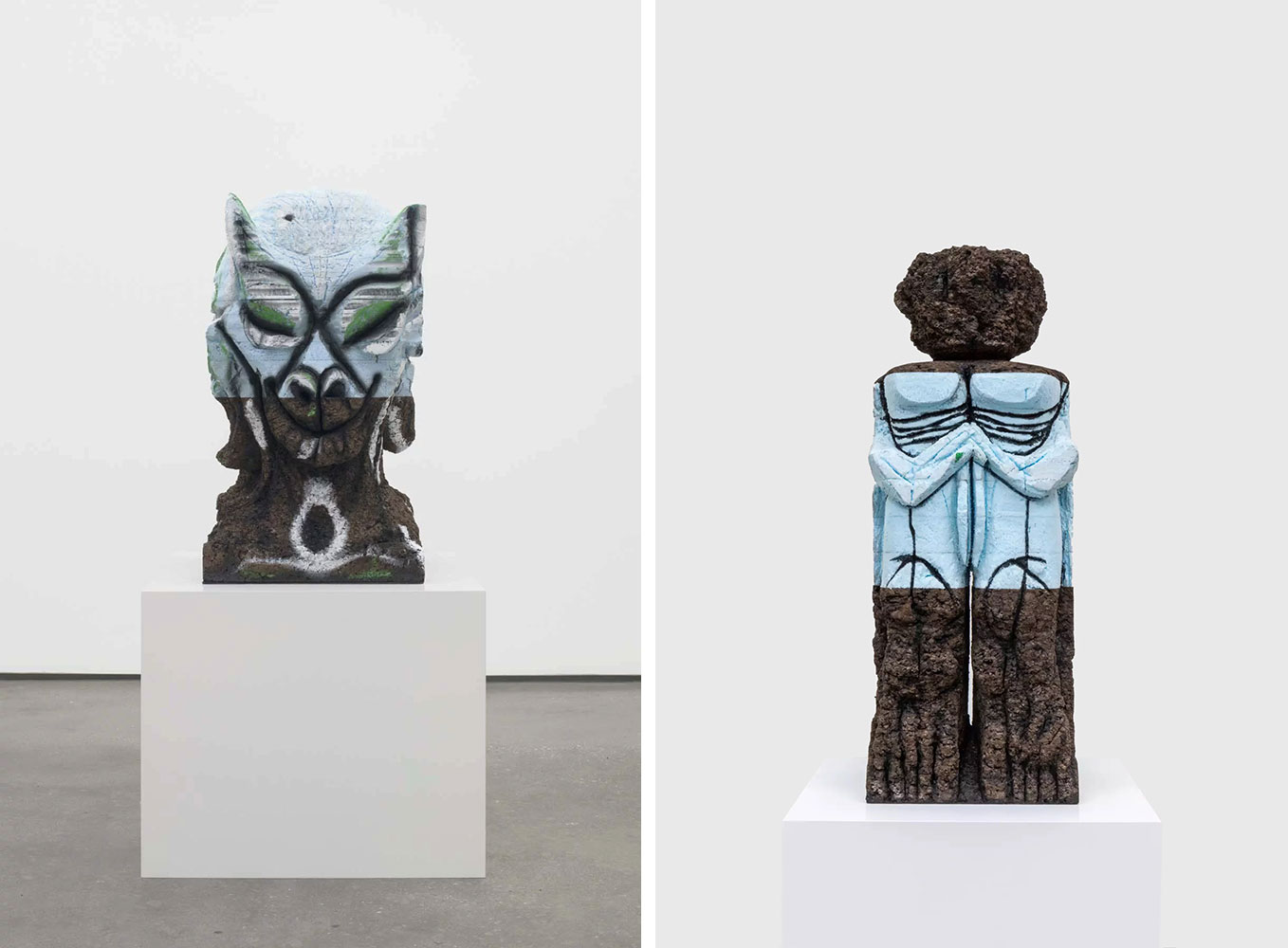
Right: Huma Bhabha, Receiver, 2019, Bronze, 98 3/4 × 18 × 25 inches (250.8 × 45.7 × 63.5 cm), © Huma Bhabha, Courtesy the artist and David Zwirner Gallery
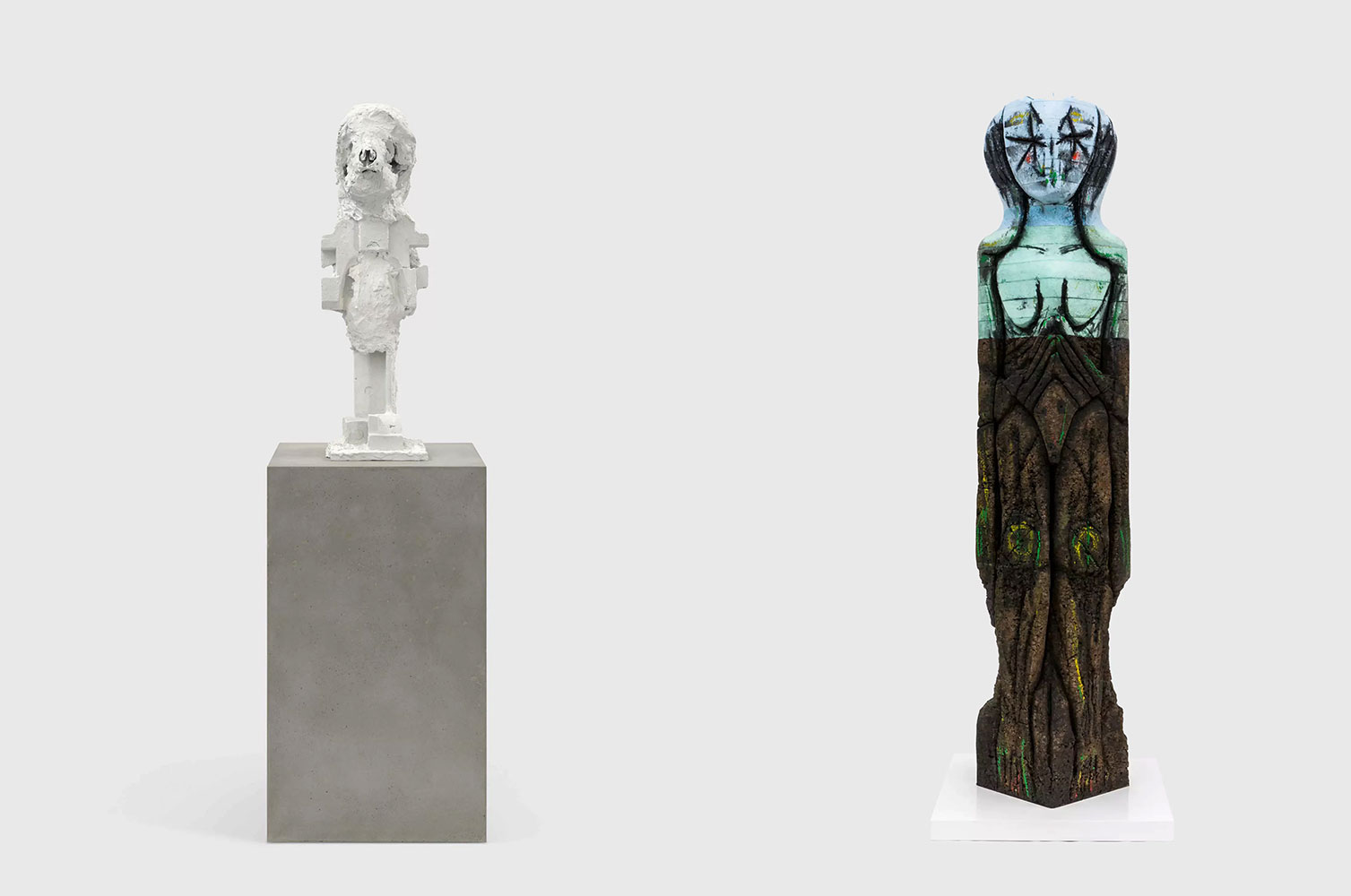
Right: Huma Bhabha, The Hood Maker, 2019, Cork, Styrofoam, acrylic, and oil stick, Artwork: 73 1/2 × 12 × 12 (186.7 × 30.5 × 30.5 cm), Overall: 75 3/4 × 24 × 24 inches (192.4 × 61 × 61 cm), © Huma Bhabha, Courtesy the artist and David Zwirner Gallery
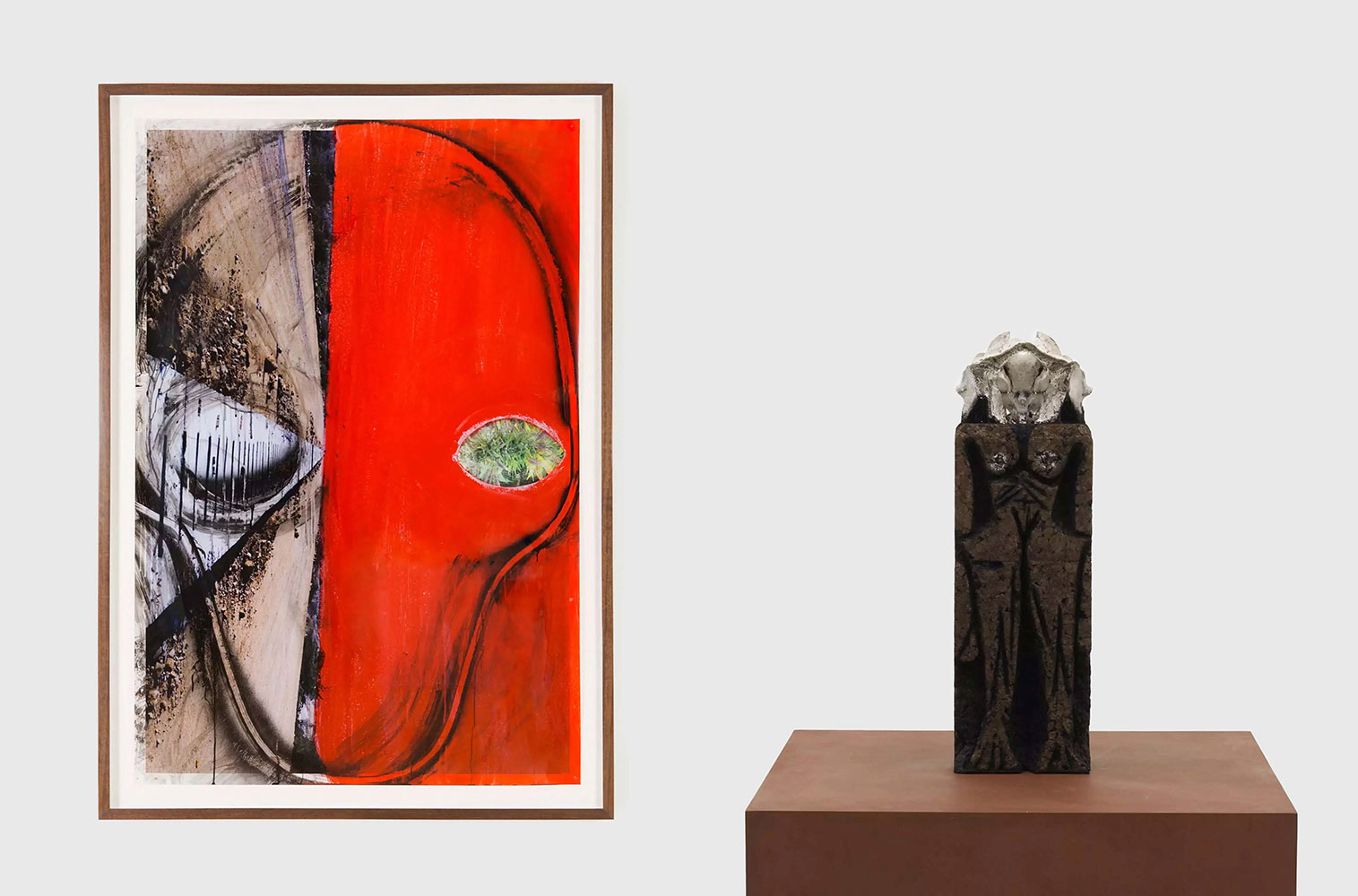
Right: Huma Bhabha, Everything is True, 2021, Cork, bone, acrylic, and paste, Artwork: 19 1/4 × 4 × 6 inches (48.9 × 10.2 × 15.2 cm), Pedestal: 29 1/4 × 21 7/8 × 21 7/8 inches (74.3 × 55.6 × 55.6 cm), Overall: 48 1/4 × 22 × 22 inches (122.5 × 55.9 × 55.9 cm), Overall: 75 3/4 × 24 × 24 inches (192.4 × 61 × 61 cm), © Huma Bhabha, Courtesy the artist and David Zwirner Gallery
